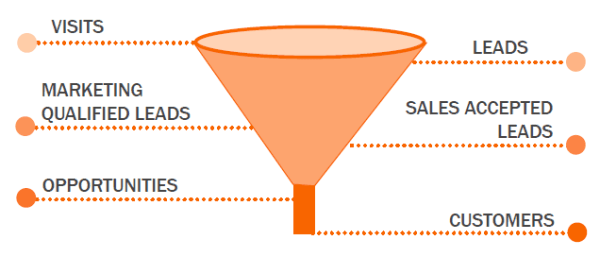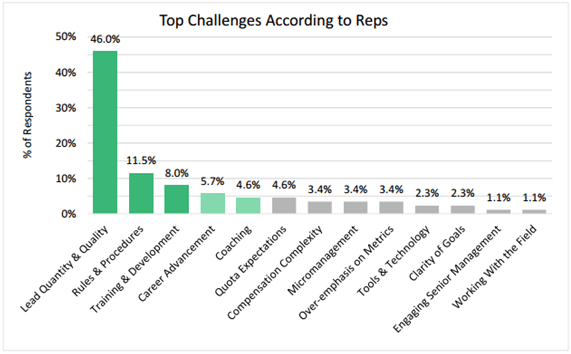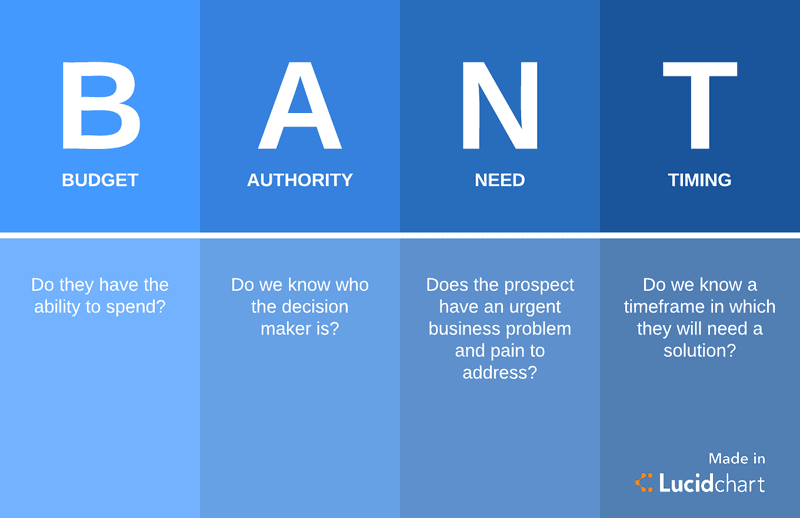Lead Qualification: How To Qualify Your B2B Leads And Improve Your Sales Process
Sales Pipeline Masterclass: Part Five

You’re starting to warm up your leads, booking demos and running sales meetings. But how do you know a lead is worth the effort or whether the best course of action is to nurture a lead after your first meeting? That’s where lead qualification comes in.
This post is Part Five in a new Masterclass series on how to build your sales pipeline. Building a strong sales pipeline is the #1 key to sales success. That’s why we created this indispensable step-by-step guide, to teach you how to build your pipeline the right way.
– Jeroen Corthout, Co-Founder Salesflare, an easy-to-use sales CRM for small B2B companies
In this fifth part of the series, we’ll be explaining the concept of lead qualification, why it’s so important for B2B sales and how you can qualify your leads in the best way.
1. What is lead qualification?
Lead qualification refers to the the process of determining whether a prospect fits your target customer profile, has a chance of becoming a customer and most importantly has a chance of being a successful, long-term customer.

2. Why is lead qualification important?
Imagine you run a marketing campaign on Facebook and LinkedIn to generate leads. Apart from the campaigns you run, you also receive a steady influx of organic leads from your website. In total, you end up with a list of about 100 people who seem interested in what you’re offering.
How will you know which of those might turn into your long-term customers?
You could of course start by looking at the very first lead you generated, but by the time you reach the last one, there is a high risk you will have missed the opportunity to engage with someone who was highly motivated to use your product at that point in time.
As data suggests, only 25% of leads qualify as ideal customers of a business and a whopping 75% of those never even convert. The same study also states that about 73% of the leads businesses generate online are not sales-ready and about 50% are qualified but not willing to buy.
Simply put, ignoring lead qualification will lead to:
1. Wasted time
If you’re not qualifying your leads before booking your sales meetings, you’ll end up wasting a lot of time following up with those which aren’t a good fit for your company.
For instance, you might end up chasing a prospect that doesn’t have the budget for what you’re offering. Even if you run multiple sales meetings with this lead, you’ll never be able to close the deal.

2. Losing opportunities
Some of your best leads may require more effort and lead nurturing to convert. If you’re wasting time following up every lead you generated, you’re going to end up losing opportunities.
The market-fit leads get lost when you wait too long with following up or don’t follow them up at all because you were trying to convert a cold lead. If you don’t know who is worth the effort or who is your high-value prospect, you’ll just lose your chance to sell to them at the right time.
3. Closing deals that don’t last
Approaching all the leads in your pipeline might result in a few sales. But chances are you’ll end up closing more short-term deals hereby leaving more lucrative long-term deals on the table.
This often happens when you’re giving commission or setting targets for the sales people. They then focus on closing deals that will only give short-term value for both the customer and your company. This can partly be solved by creating clear qualification criteria, so that sales people don’t focus on leads that don’t fit your ideal customer persona.
The downsides of not investing time and resources in lead qualification are crystal clear. That being said, there are still 46% of businesses out there that find it challenging.

According to Steven Tulman, about 67% of your lost sales are caused by leads that weren’t qualified.
How then do you effectively qualify your leads in such a way that your sales approach remains optimized and focused on market growth?
3. Lead qualification methodologies for sales
While pulling all the data you possibly can on your lead is the way to go, there is a process one should follow to ensure you have all the right data sets to qualify a lead. This is the reason why IBM created the BANT framework.

Let’s walk you through the framework, how it works and why completing each step here is important.
1. Identifying the means of your lead (Budget)
The very first parameter on which you should be qualifying a lead is whether they will be able to afford the solution you’re offering or not. Reaching out to a lead that does not have the budget for your solution, hoping they will set some aside, is a shot in the dark that may end up wasting time and effort.
A few important questions to identify a lead’s budget for your solution:
- How much are they already spending right now on the problem you address?
- Whose budget is this coming out of (sales, marketing or other)?
- How much would it cost for them to build a solution themselves?
- How much do they lose on ignoring the problem?
- What’s the ROI they are hoping to see?
- What is the budget range set for the purchase?
- Does price play a big role in their decision to purchase?

2. Decision-making (Authority)
In our previous post we mentioned how there are on average 6.8 people part of each B2B sales deal. That is why it’s important for you to know if you’re talking to the right person. If you’re not, your opportunity is not that qualified – unless of course you manage to get in touch with the right person through the current person or through further networking.
A couple of questions that will help you identify if you’re speaking to the right person:
- What role does the lead play in decision-making?
- How many people/departments are involved?
- Who is the final decision maker?
- How does the company/ department make a decision?
- What concerns will the decision maker have?
- Who will be the point of contact for implementing or overseeing the product?
- When do they want to start using the product?
- Which metrics should you be evaluating success on?
3. Understanding needs (Need)
The next step is to understand the needs of your prospect. You should try to identify what their business goals are, the challenges they are facing and then offer them the solutions you have.
After all, a successful sales meeting is when you’re able to understand the prospect and fulfill their needs. But to do so, you need answers to the questions below:
- How did they hear about your business and your product?
- What are the top challenges the lead is facing?
- What are the challenges that the company is facing?
- Are any of the business’ problems urgent?
- What are the goals they want to achieve?
- How do their goals benefit you?
- What motivated them to look for solutions?
- Which features do they think the solution must have and why?
4. Gauging timing (Timing)
Be it the budgets, approvals or comparisons, there can be multiple factors that influence the buying process. In order to keep your sales processes optimized, it is important to understand the prospect’s place in the buying journey and their timeline leading up to making the purchase.

A prospect that knows they will need your solution in 3 months is better than the one that says they might need it some day in the future. Based on your sales process and business goals, you should decide which time frame is acceptable for you.
A few questions that will help you identify the prospect’s time frame:
- What other issues/ challenges are they facing?
- What’s the priority on the issue you are solving?
- When do they plan to address the problem you solve?
- Are they considering any other solutions?
Now to take your lead qualification process a step further than BANT…
5. Customer profiling (Bonus step!)
Here’s where you put your defined target audience and ideal customer personas to good use. Compare your leads with the characteristics you listed in the persona to see if they match your ideal customer.
A few important questions you should have answers to:
- How well does the lead match your ideal customer persona?
- Which industry are they in?
- How long has the company been in business?
- What is the size of the organization in terms of customers, employees and revenue?
- Are they located in your target market?
- What’s the ideal use case of your product for them?
- What would make them a bad fit for your product? (Signs you should be looking out for)
You might be wondering if your prospects are going to be willing to answer all the questions above. The reality is that not all questions will be answered which is why you need to bunch them together intelligently.

Make sure your questions don’t give off the impression you haven’t done your research. You don’t want your lead to feel negatively towards you, nor for them to be confused or overwhelmed at any stage of the sales process.
4. Making lead qualification drive sales
Lead qualification does not follow a one-size-fits-all approach. Every business has different needs and a different market to cater to, that changes at its own pace.
That is why your lead qualification process has to evolve along with the changing market needs as well as your business goals. It will also help you keep your pipeline healthy, predict changing consumer trends and make concrete forecasts that can be used to optimize sales processes for higher conversions.
Remember, always qualify before you sell.
Ready to start qualifying your leads? Well, don’t forget to tune in next week for Part Six in our Sales Pipeline Masterclass: How To Nail Sales Pipeline Management Like A Pro. Need a refresher? Go back and read Part Four: How To Book And Run Sales Meetings Like A Pro.

We hope you liked this post. If you did, spread the word!
👉 You can follow @salesflare on Twitter, Facebook and LinkedIn.
- 4 B2B Sales Strategies Guaranteed To Bring You More Customers - January 23, 2024
- How B2B Companies Can Integrate Sales Tools - April 18, 2019
- How B2B Companies Can Automate Customer Data - April 11, 2019
